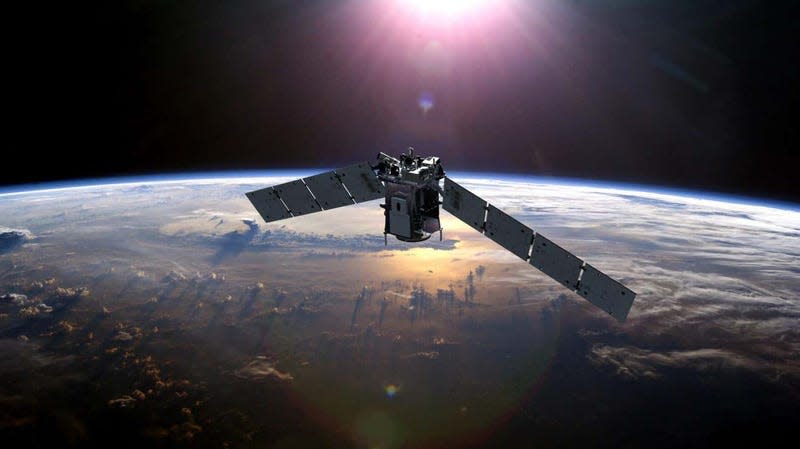Russian Space Junk Came Alarmingly Close to Smashing Into NASA Satellite

That was a really close one. Further analysis of a near-miss collision between two satellites in space revealed that they came even closer to one another than initially believed, raising more alarm over the growing danger of space debris.
In late February, NASA’s TIMED spacecraft and the defunct Russian Cosmos 2221 nearly avoided crashing into one another, which would have added thousands of space junk fragments in low Earth orbit. At the time, the incident was declared as “too close for comfort,” as ground observations estimated that the two satellites came within 20 meters of one another, but a NASA official recently revealed that it was a much closer encounter.
“We recently learned through analysis that the pass ended up being less than 10 meters [33 feet] apart–within the hard-body parameters of both satellites,” NASA Deputy Administrator Pam Melroy said during the 39th Space Symposium in Colorado Springs, according to Space.com. “It was very shocking personally, and also for all of us at NASA.”
NASA’s Thermosphere Ionosphere Mesosphere Energetics and Dynamics Mission (TIMED) spacecraft, launched in 2001 to study the Sun and Earth’s upper atmosphere, and the Russian Cosmos 2221, a defunct defense satellite, launched in 1992. The two satellites cannot be maneuvered, and so there was nothing to be done as they traveled too close to one another in orbit.
“Had the two satellites collided, we would have seen significant debris generation — tiny shards traveling tens of thousands of miles an hour, waiting to puncture a hole in another spacecraft, potentially putting human lives at risk,” Melroy is quoted as saying.
There are more than 27,000 pieces of orbital debris currently being tracked by the Department of Defense’s global Space Surveillance Network, with lots of smaller pieces also floating around undetected. As the space industry continues to grow, so does the amount of spacecraft being launched into orbit and the risk of collision with wandering pieces of space junk.
So far, there’s only been one incident in which two spacecraft collided with one another in orbit. In 2009, Iridium 33, a U.S. communications satellite, and Kosmos-2251, a defunct Russian military satellite, collided in orbit some 490 miles (789 kilometers) above Siberia. There are ongoing efforts to mitigate the risks of space junk collision, but the recent close call of the two satellites should urge more action to clean up Earth’s orbit.
For more spaceflight in your life, follow us on X (formerly Twitter) and bookmark Gizmodo’s dedicated Spaceflight page.

